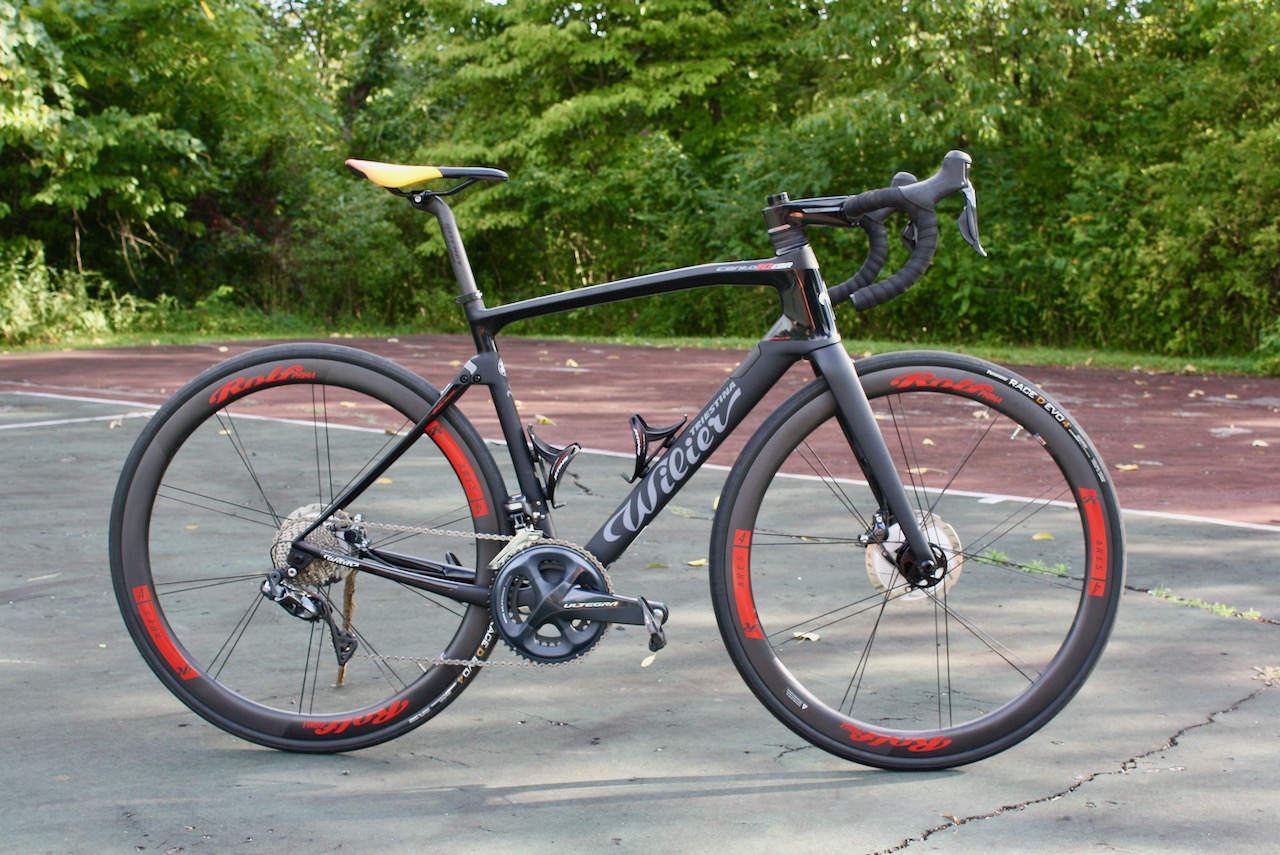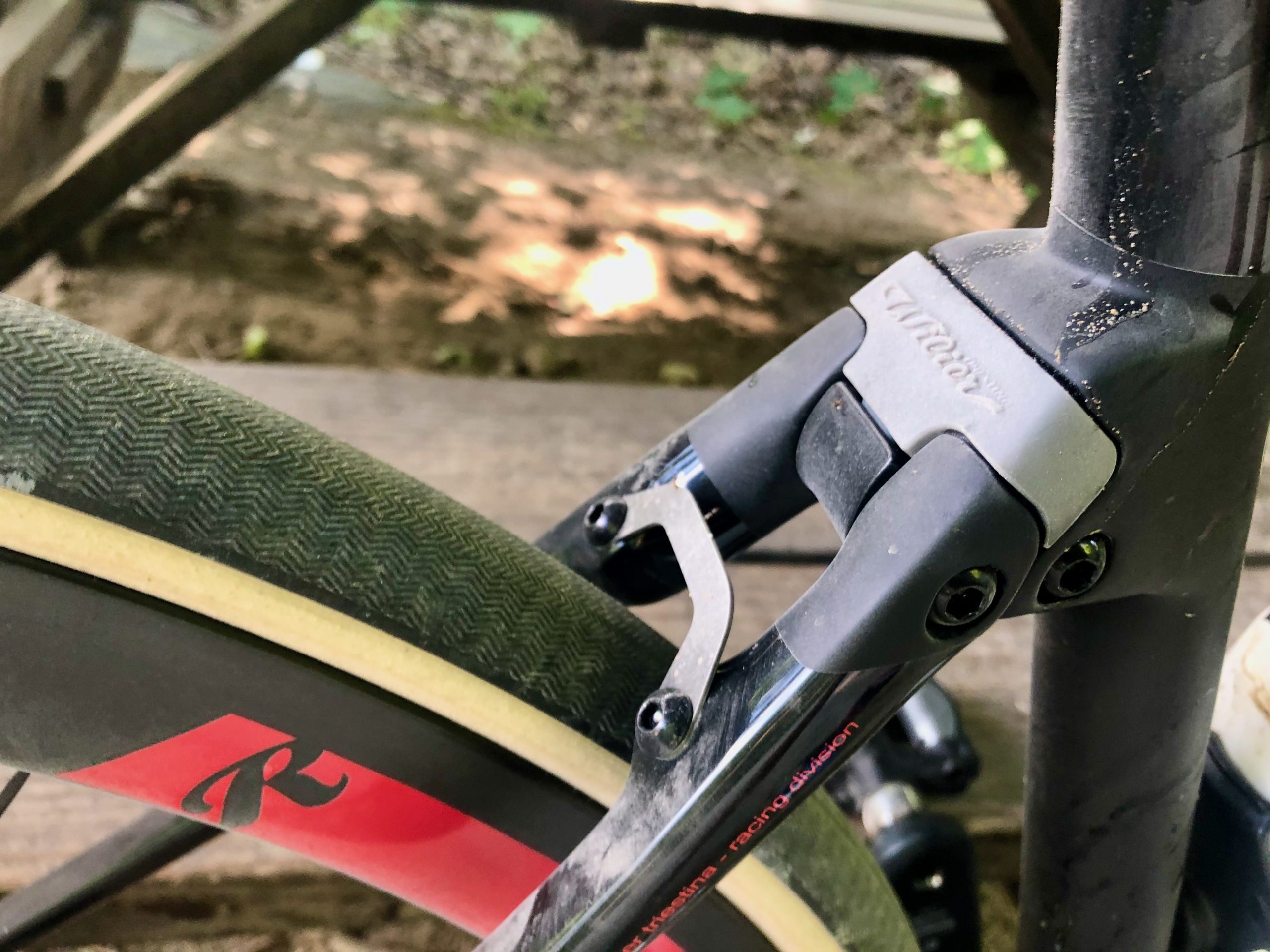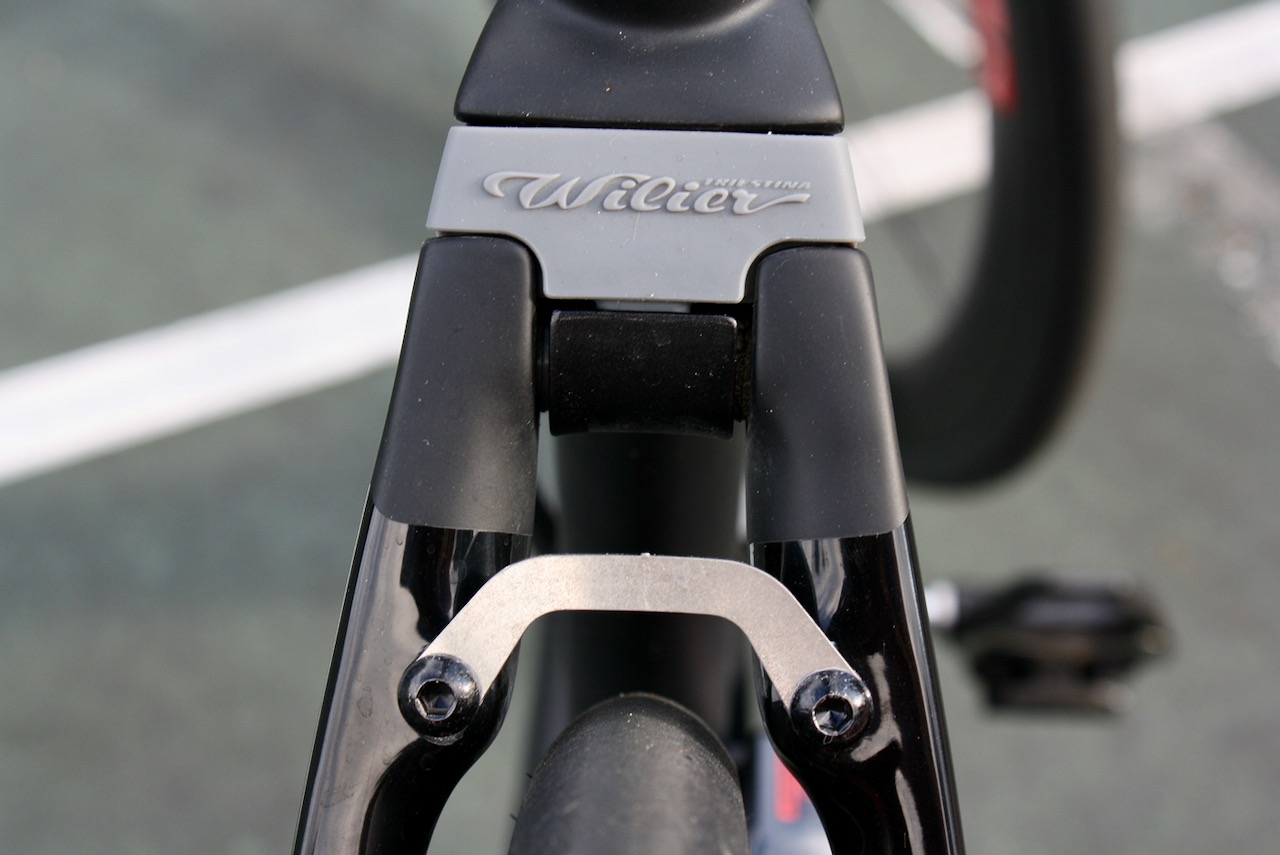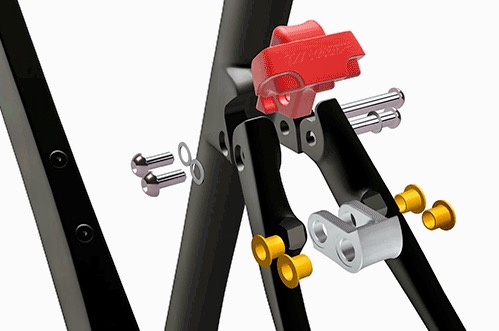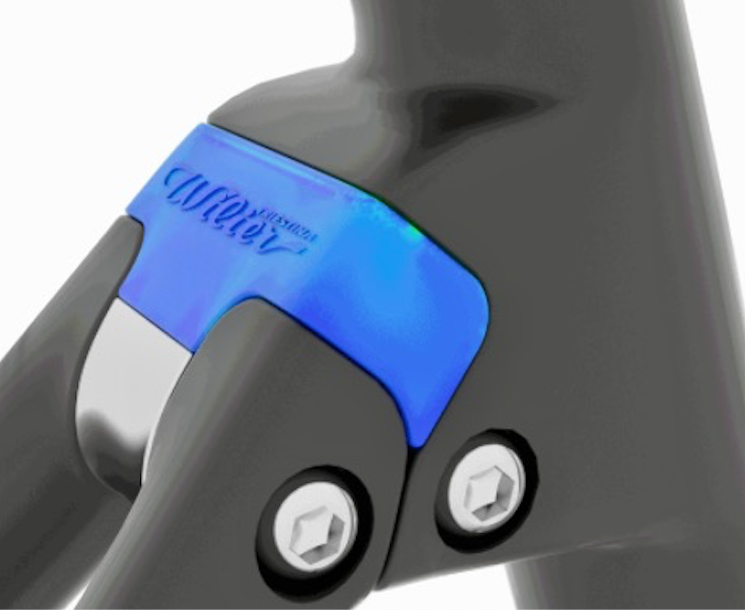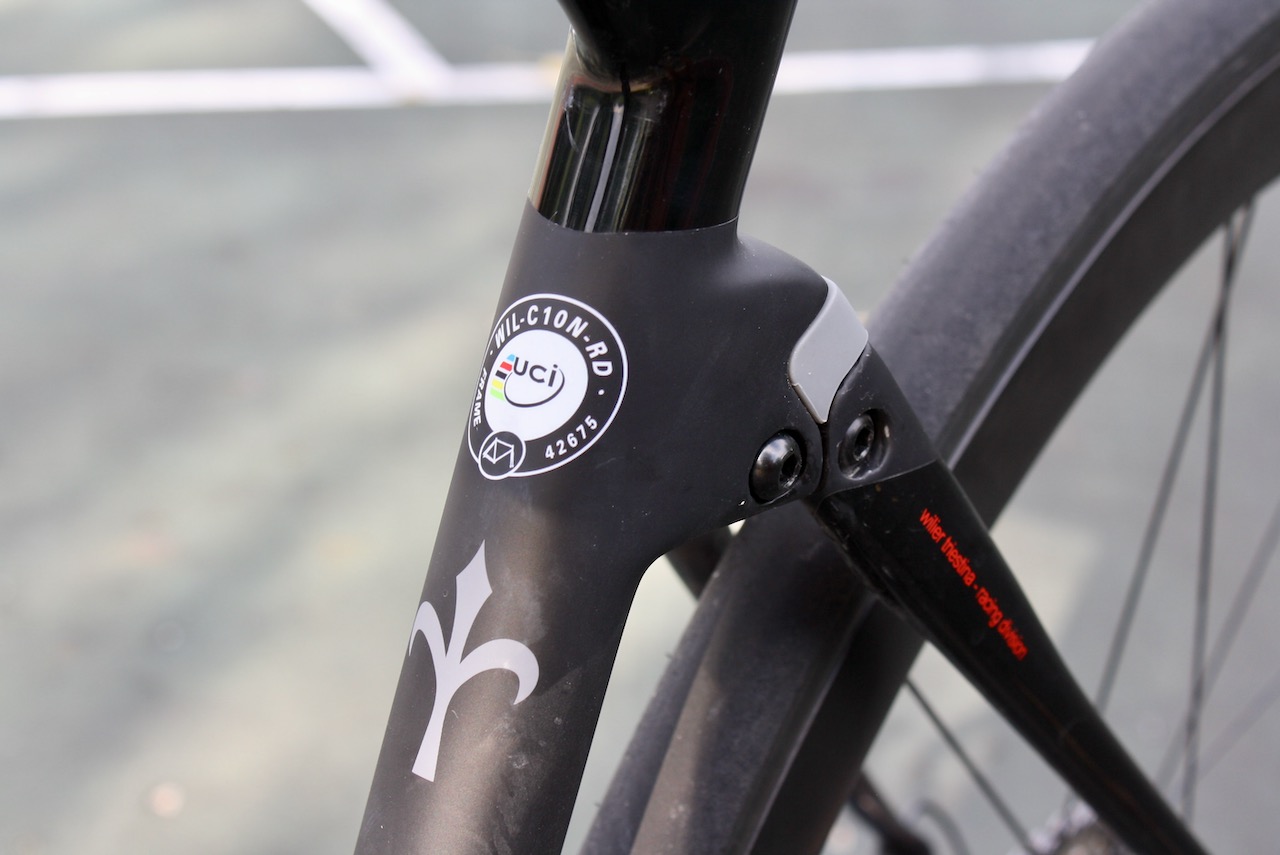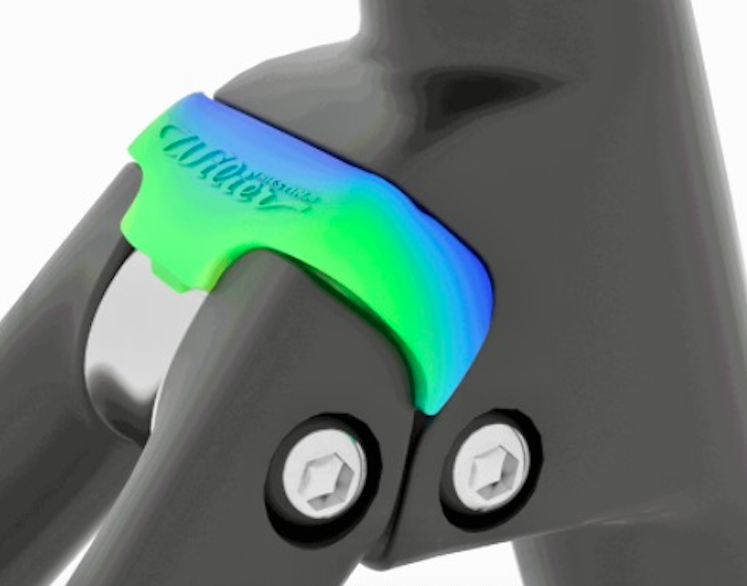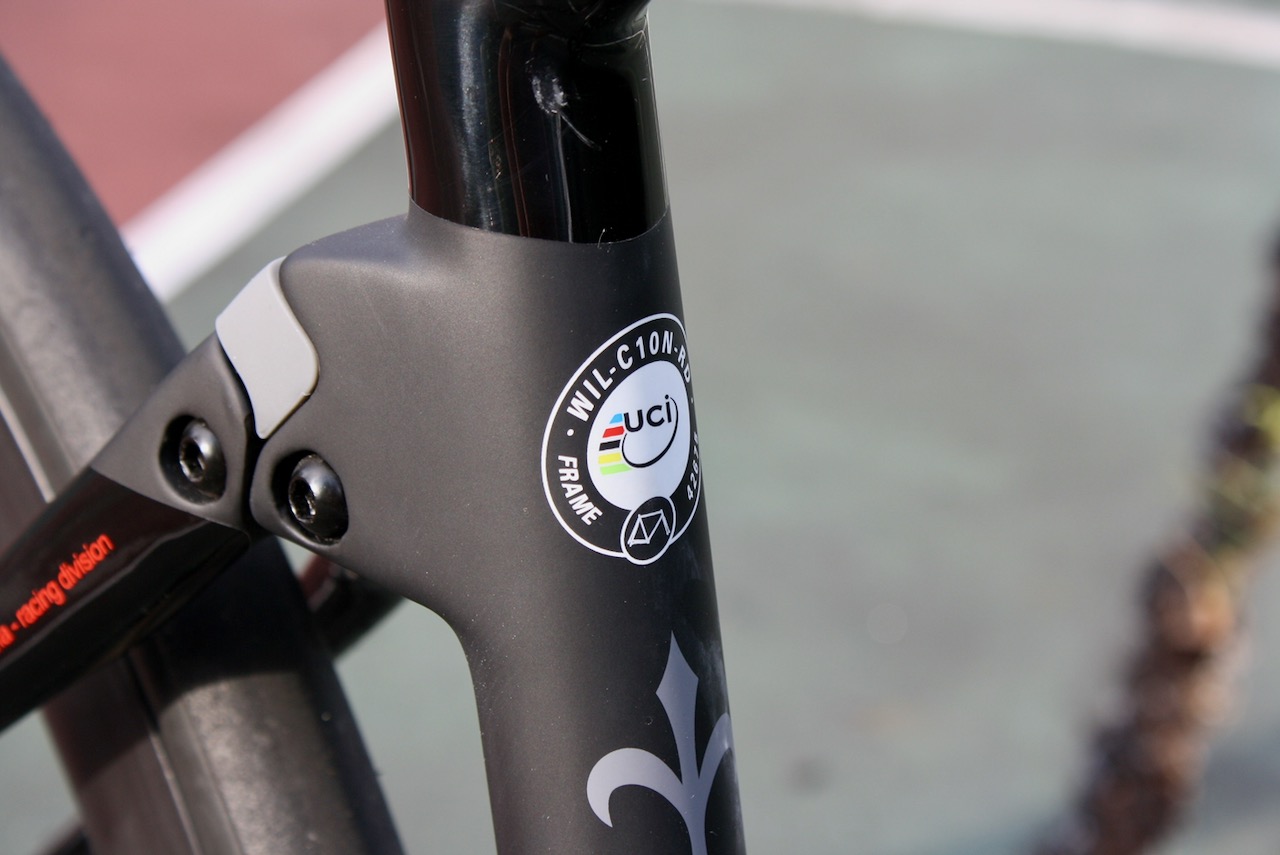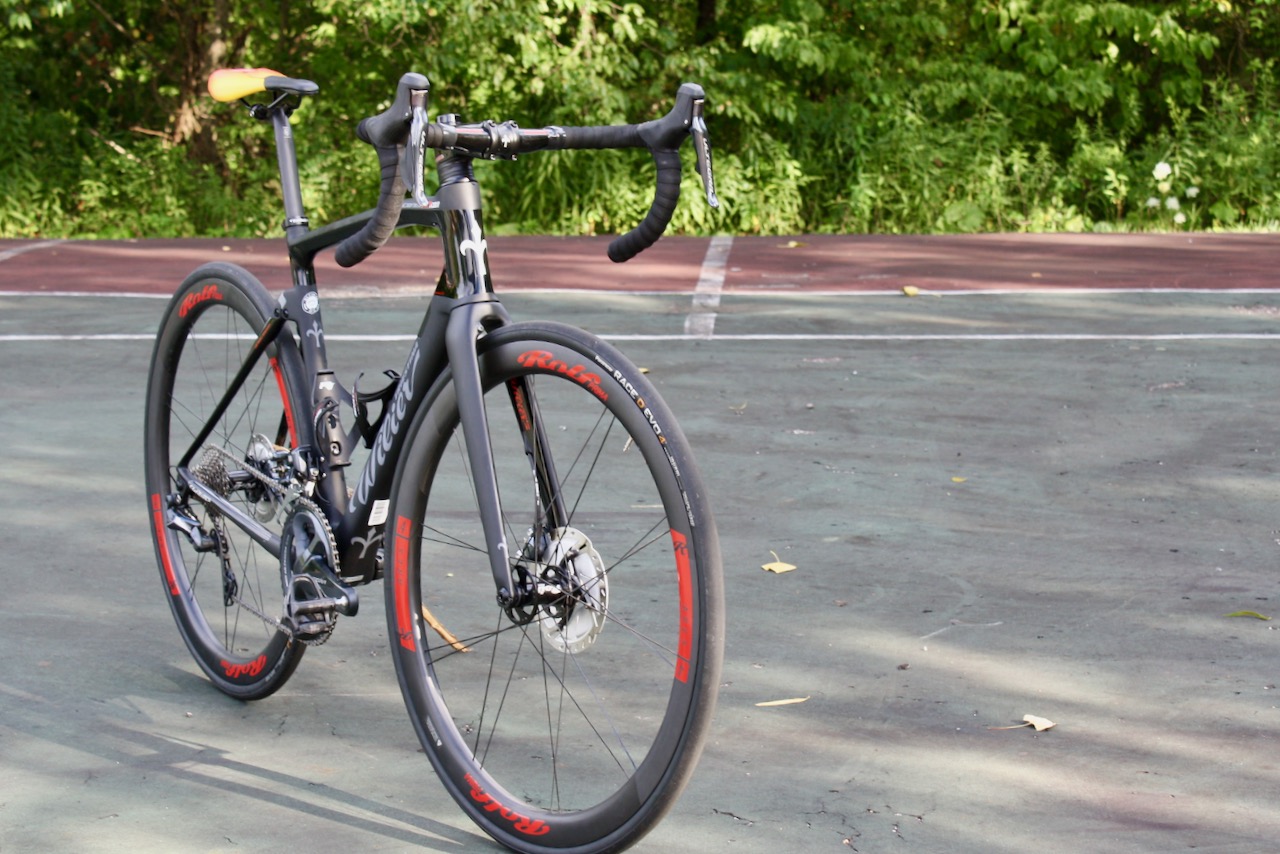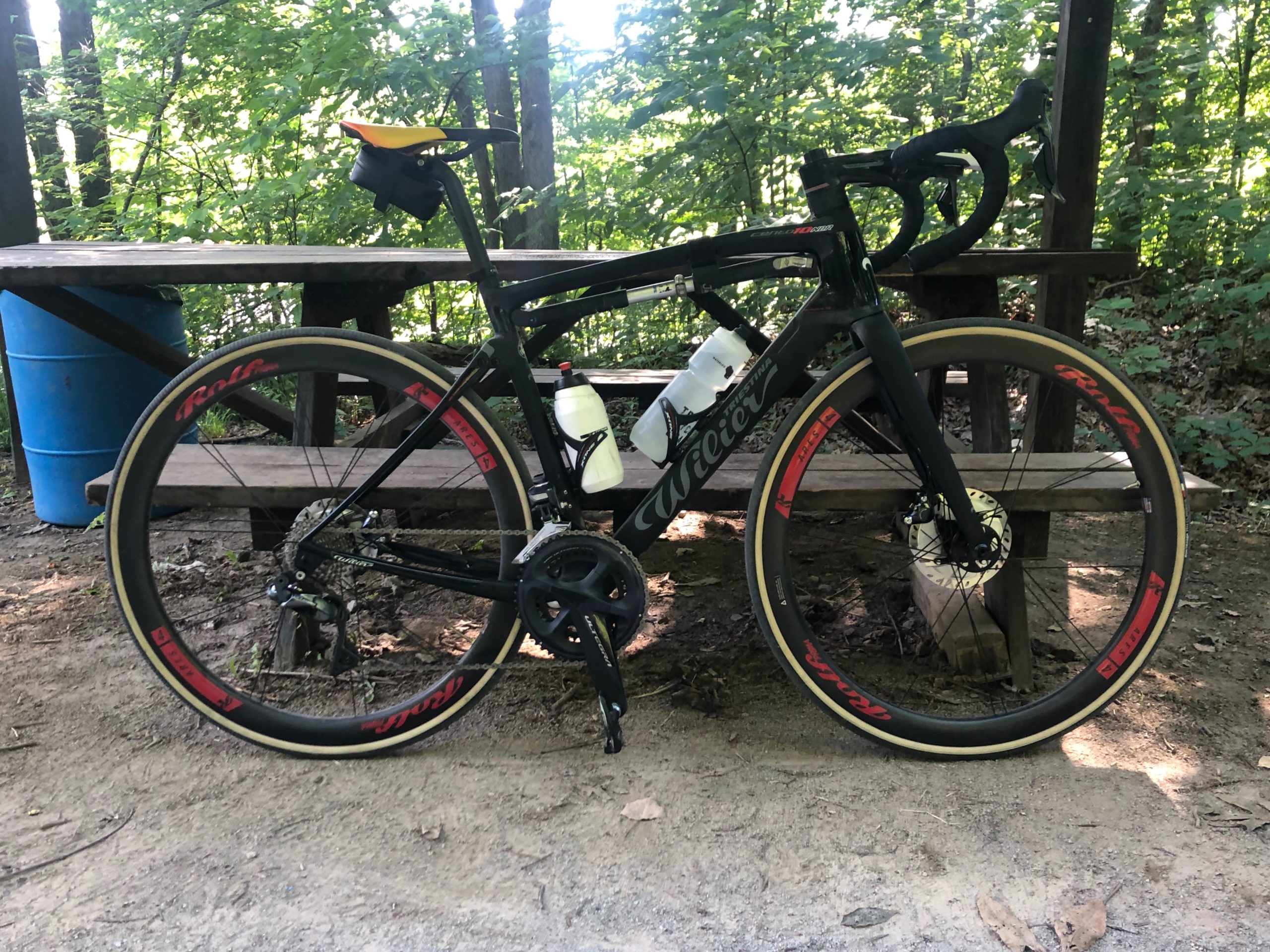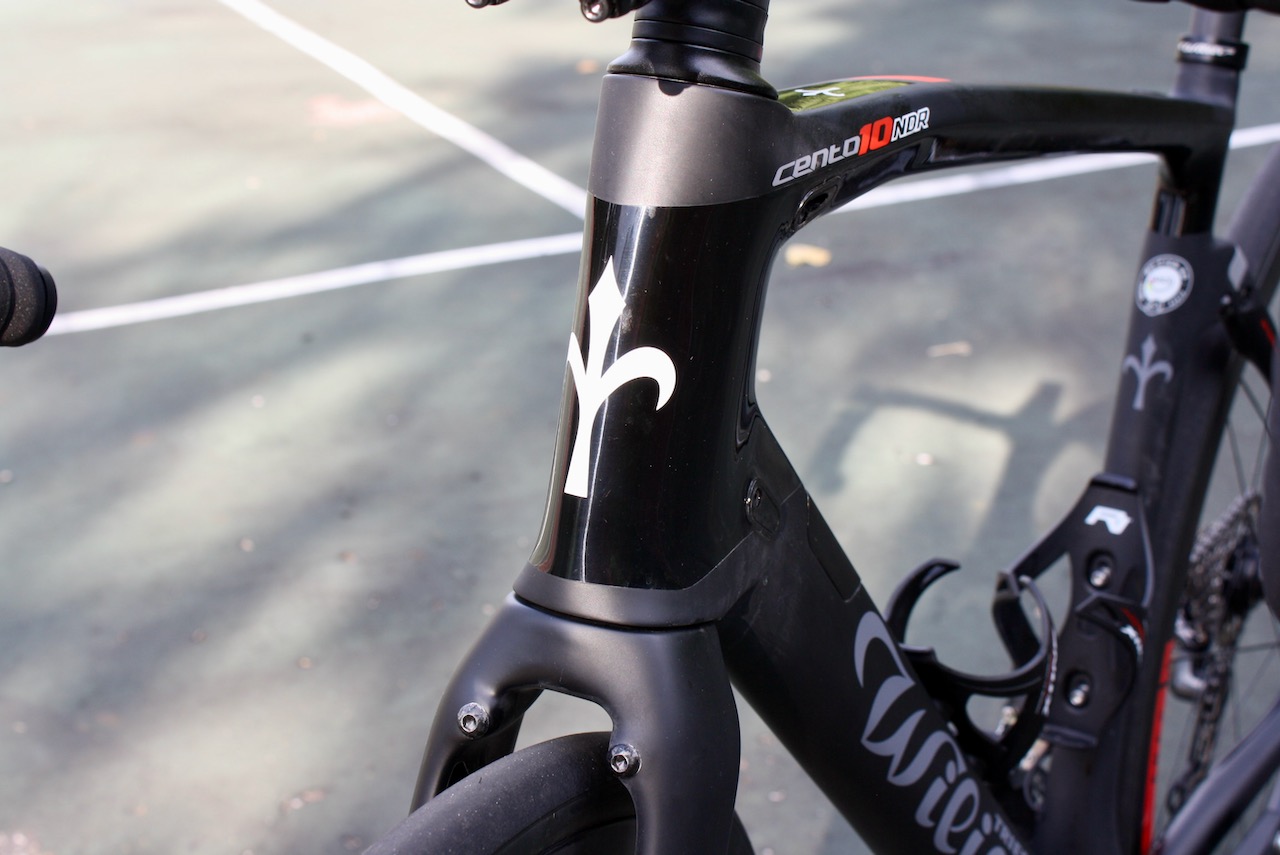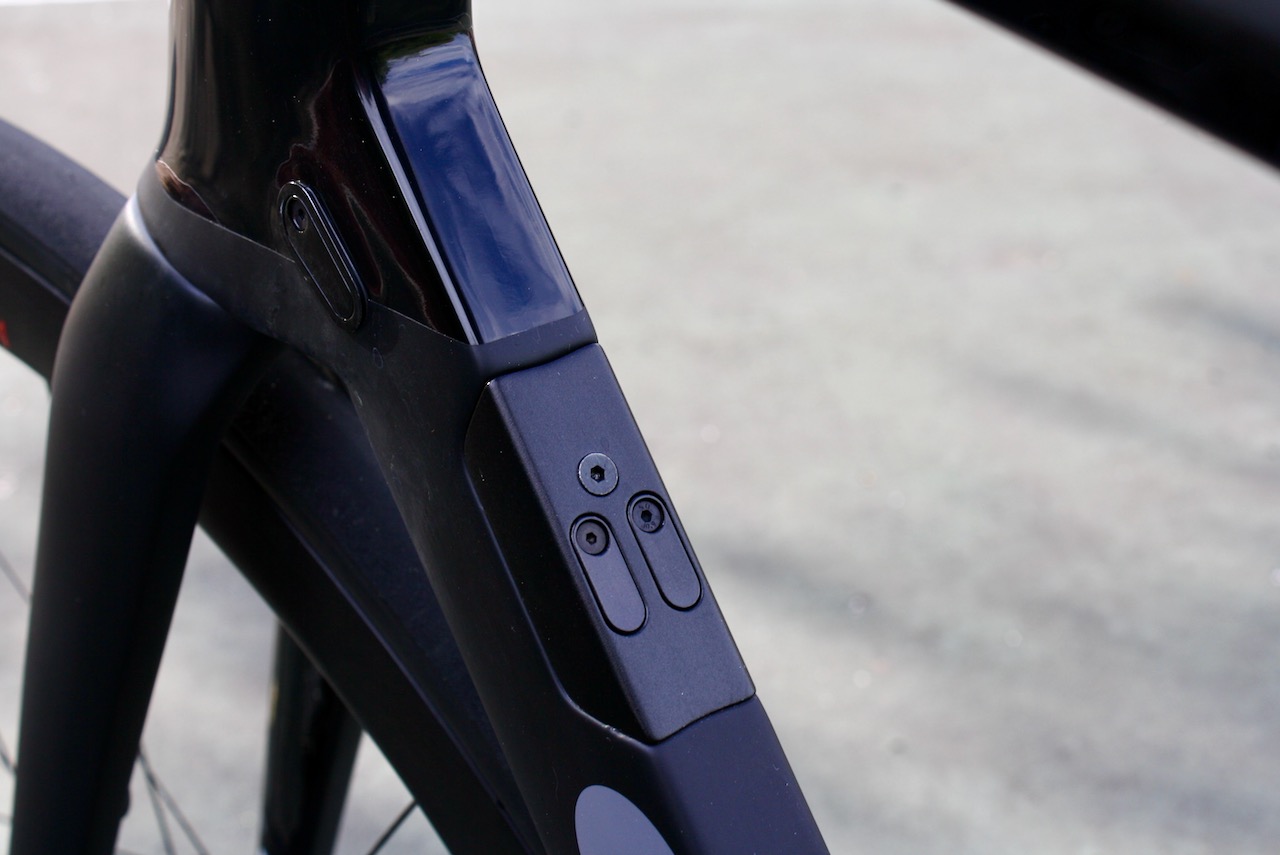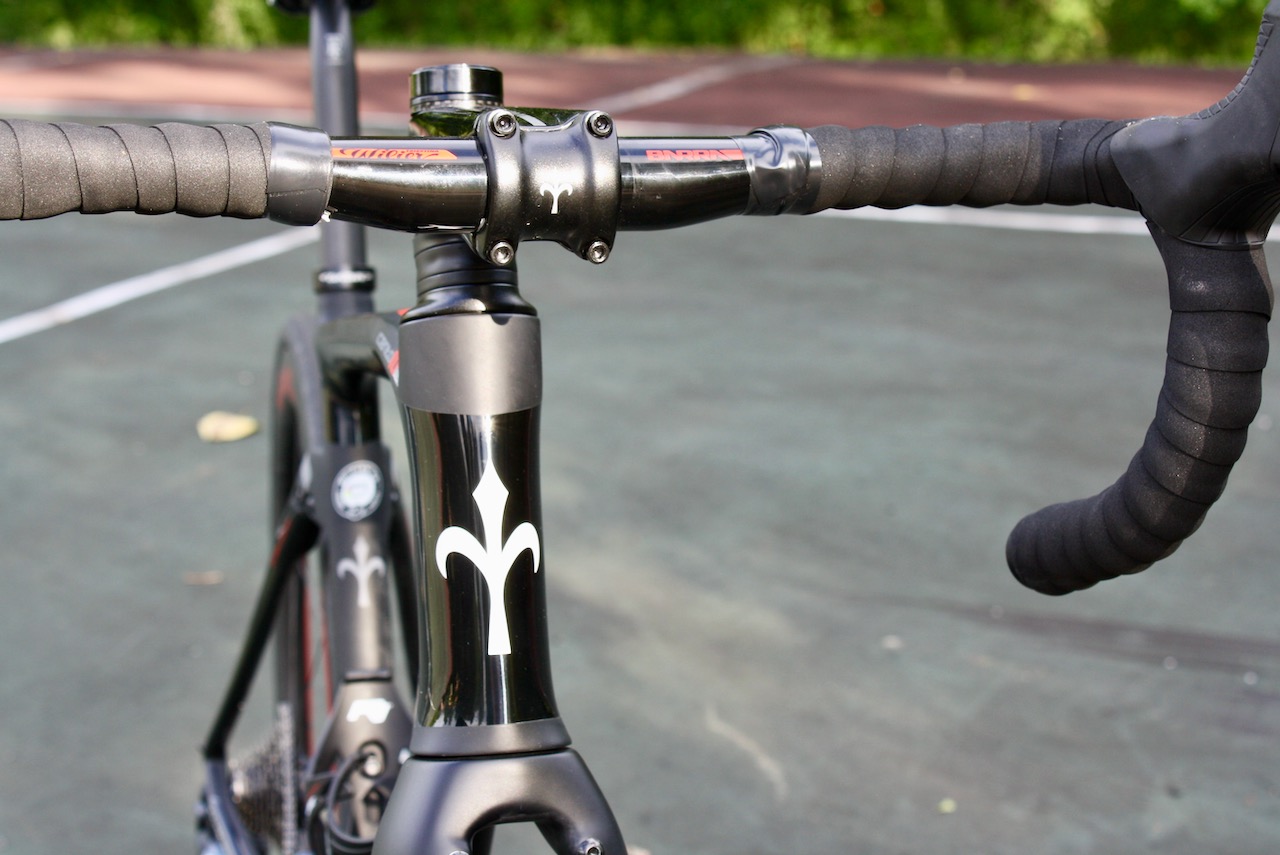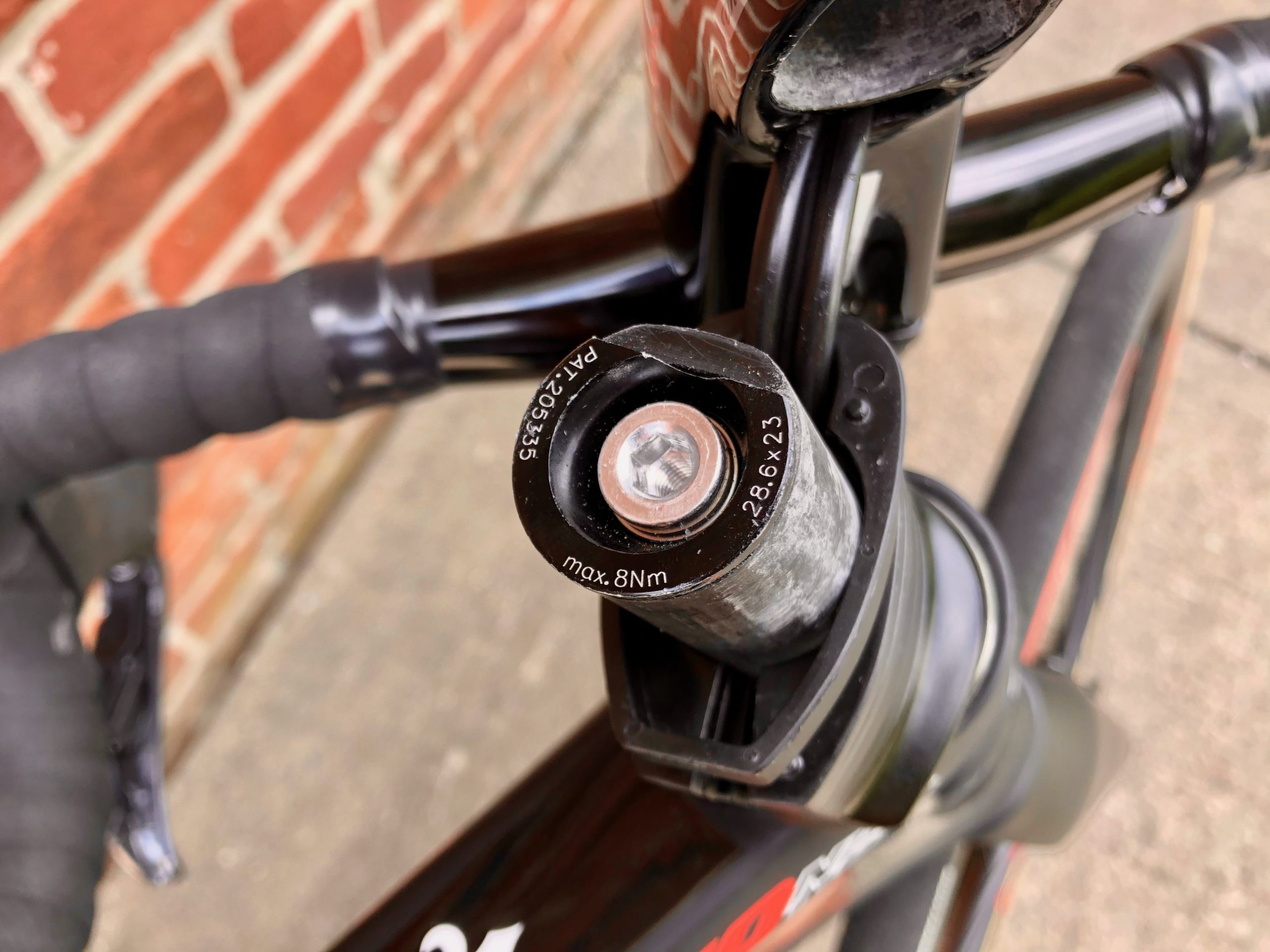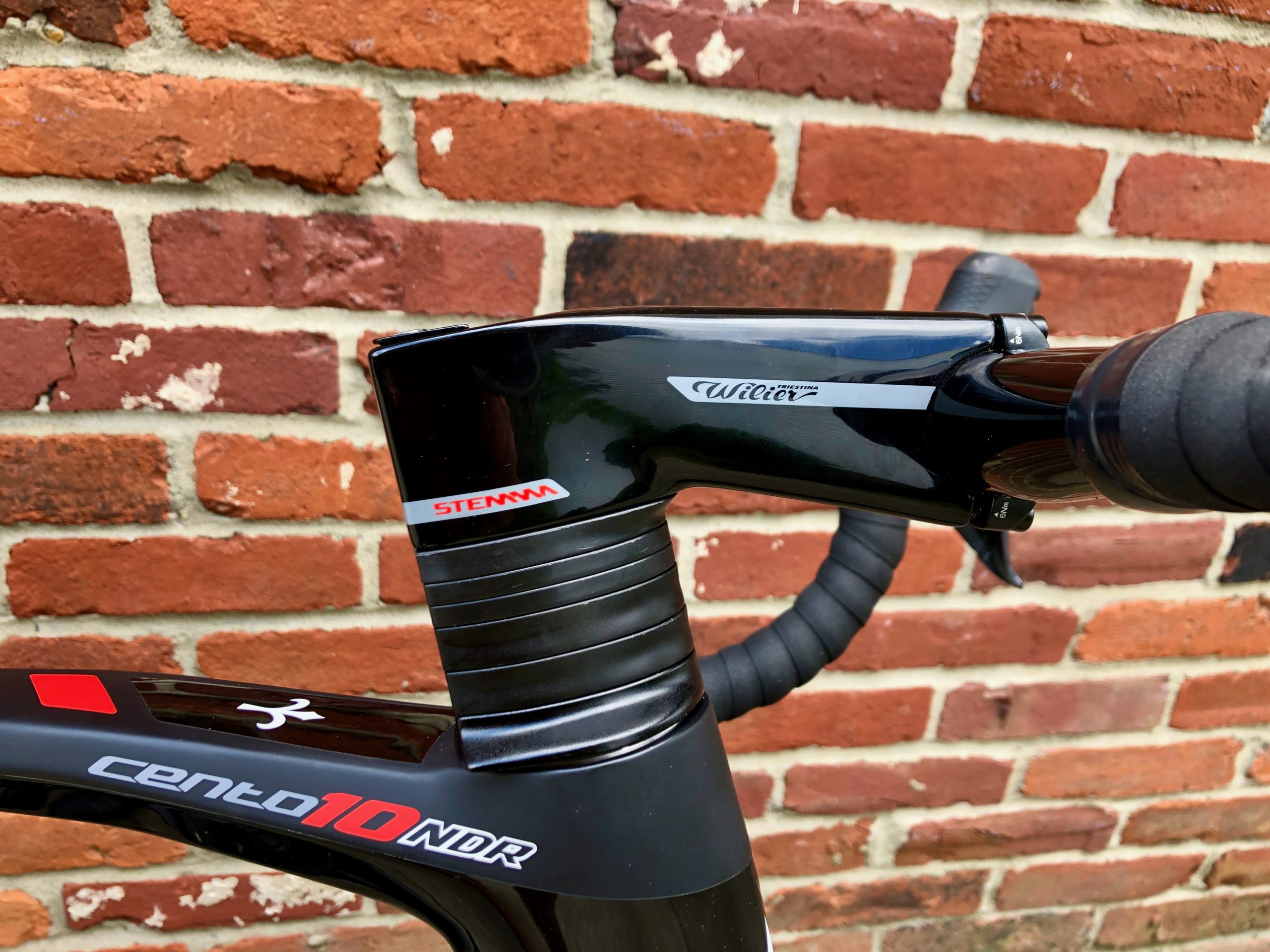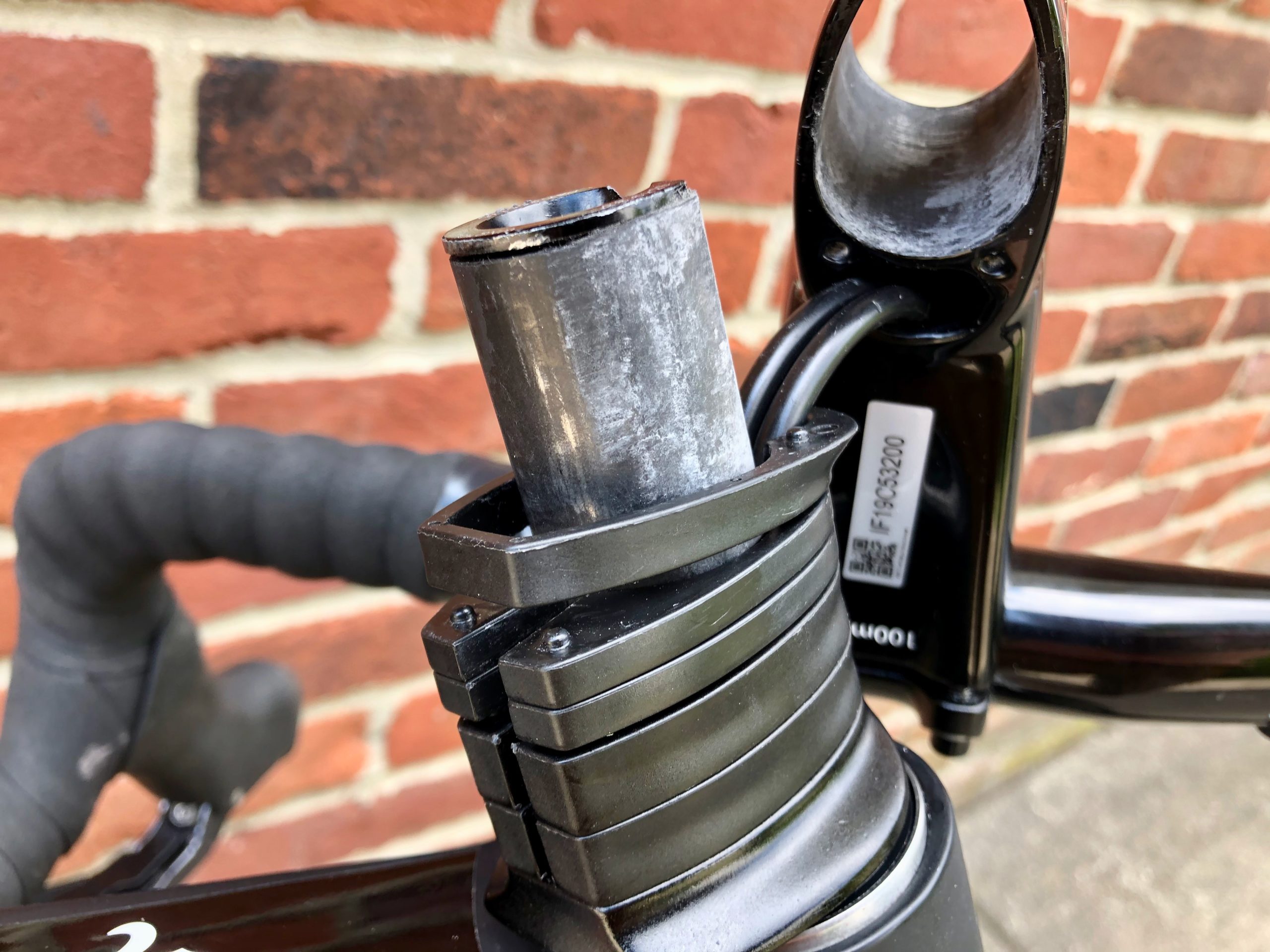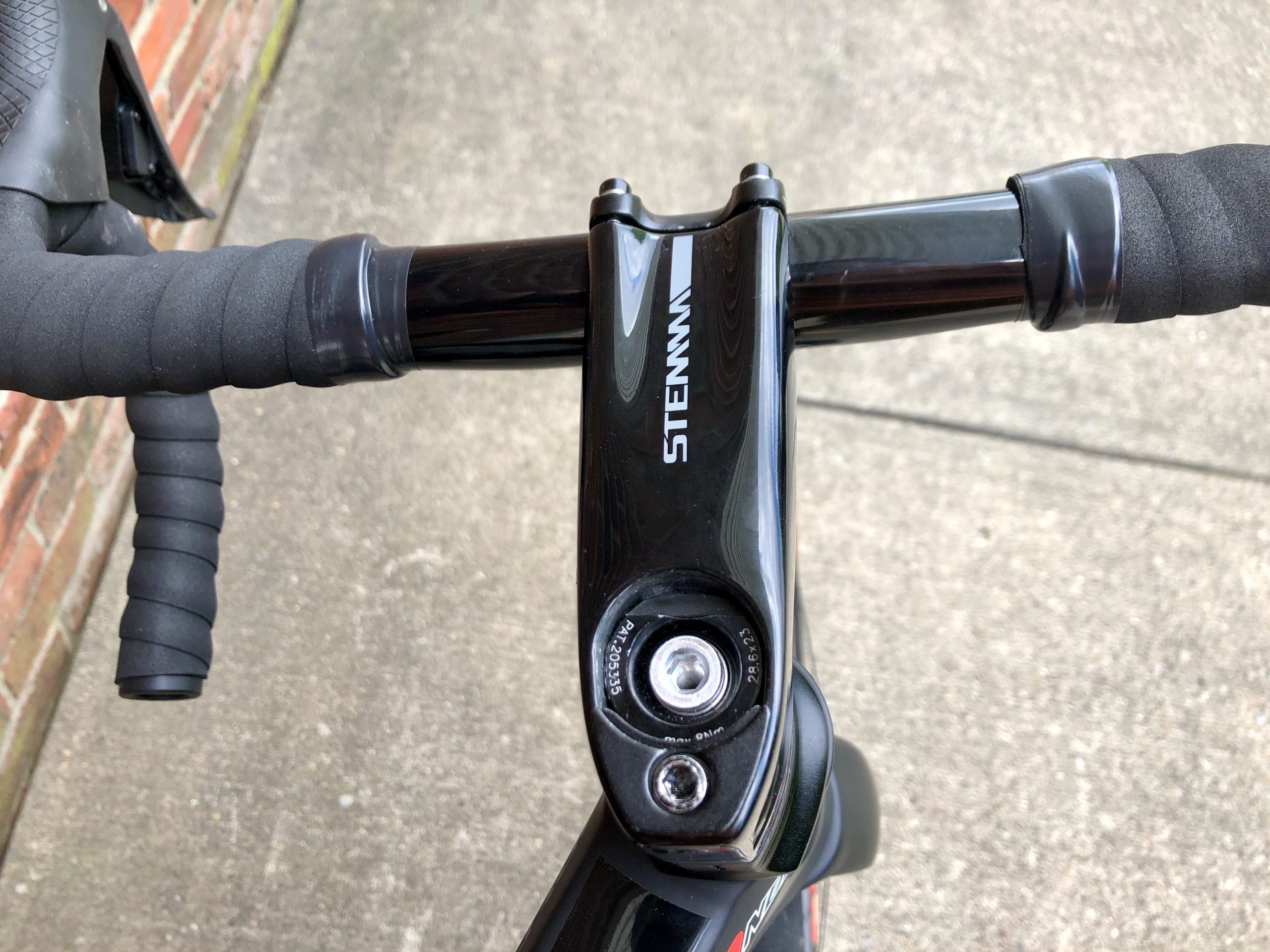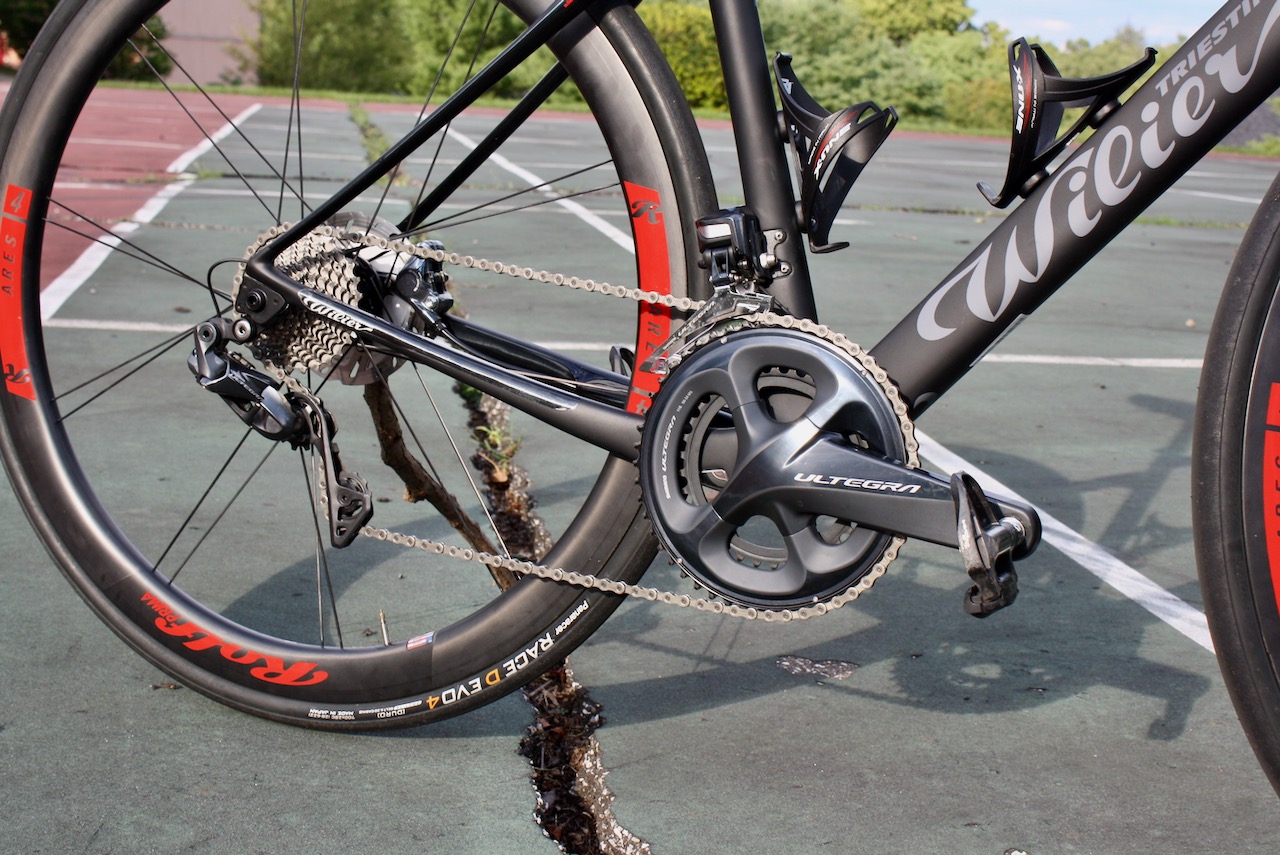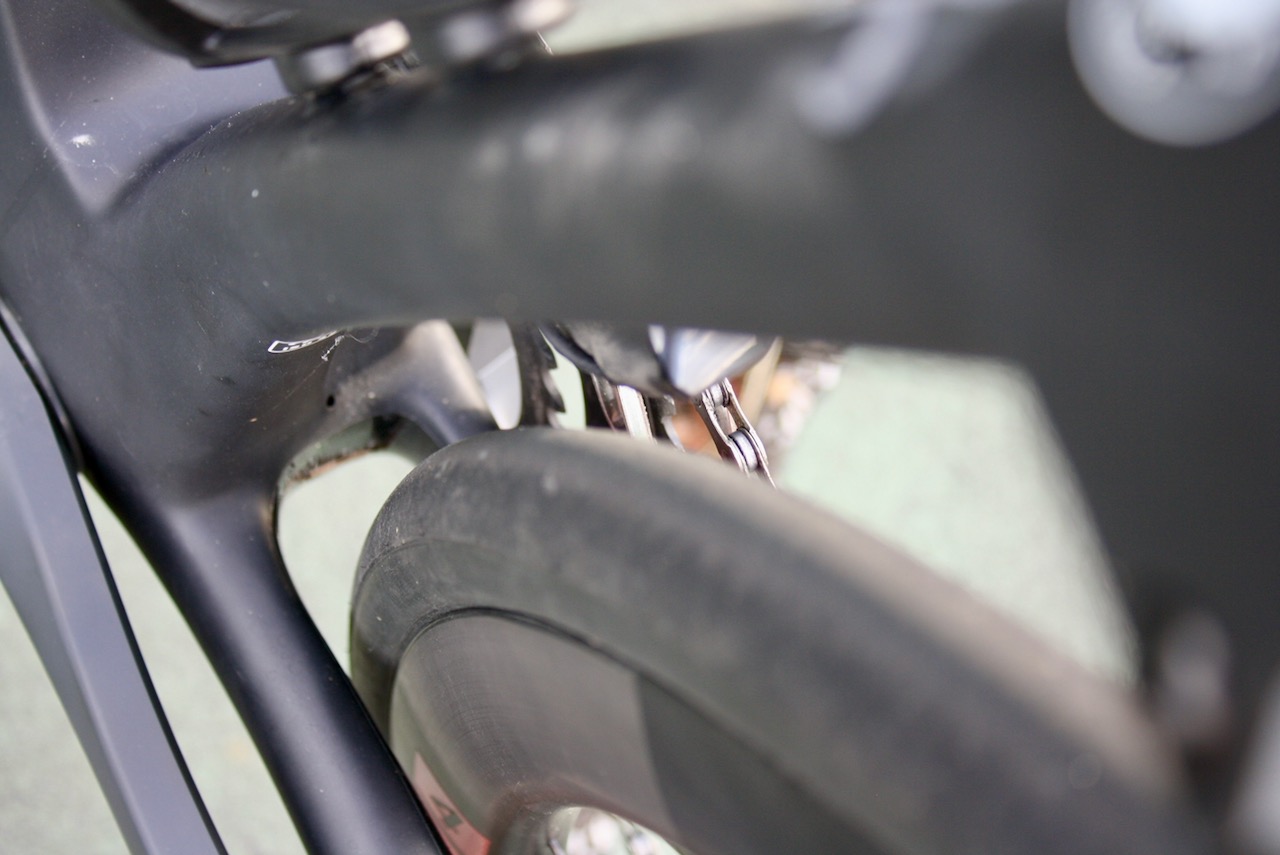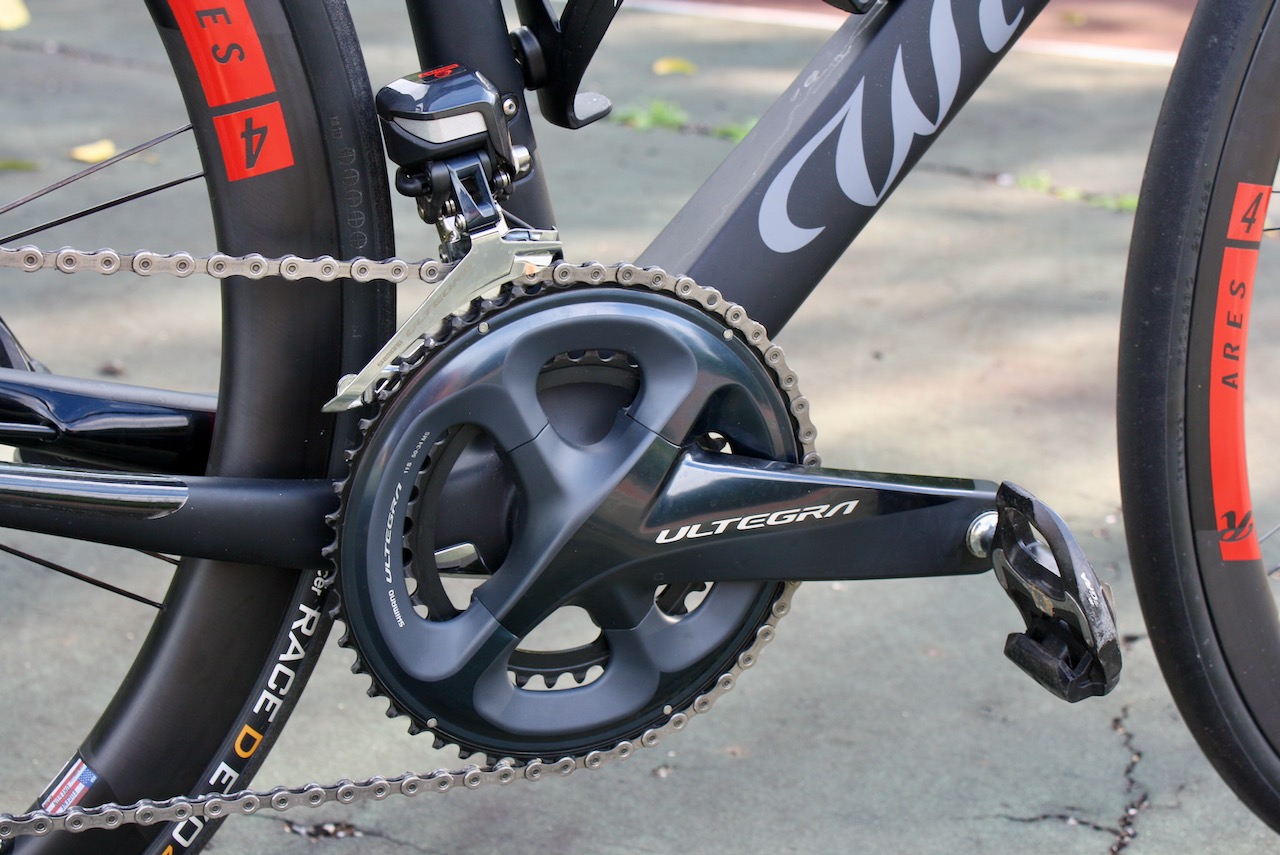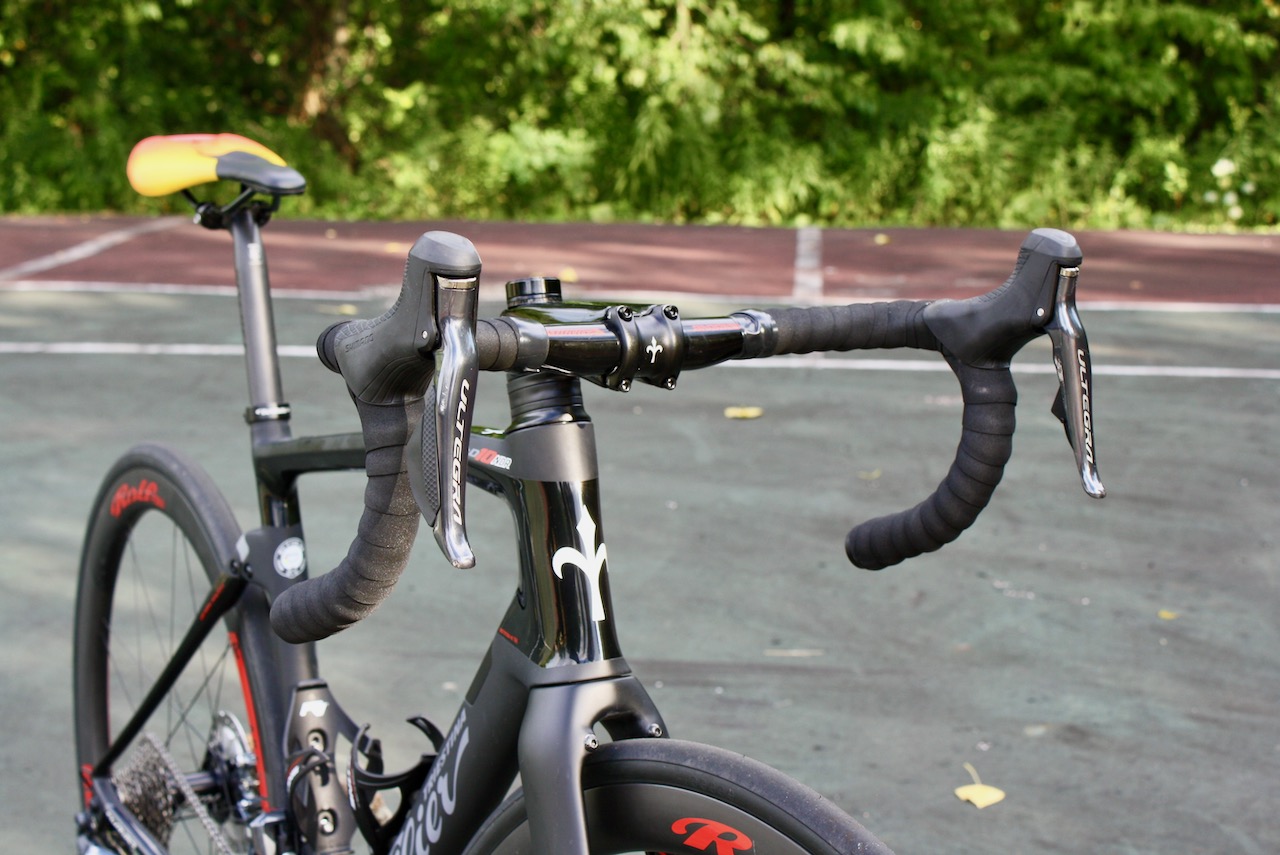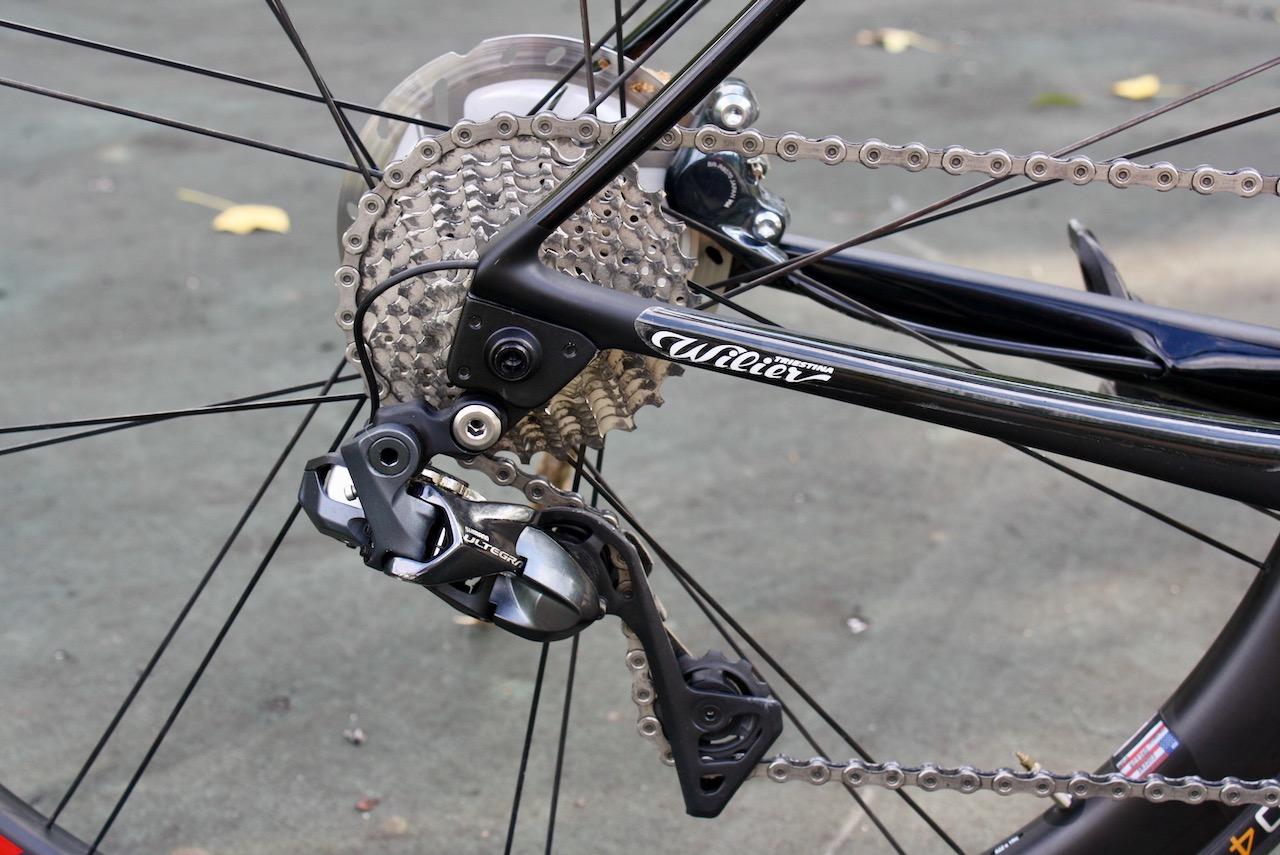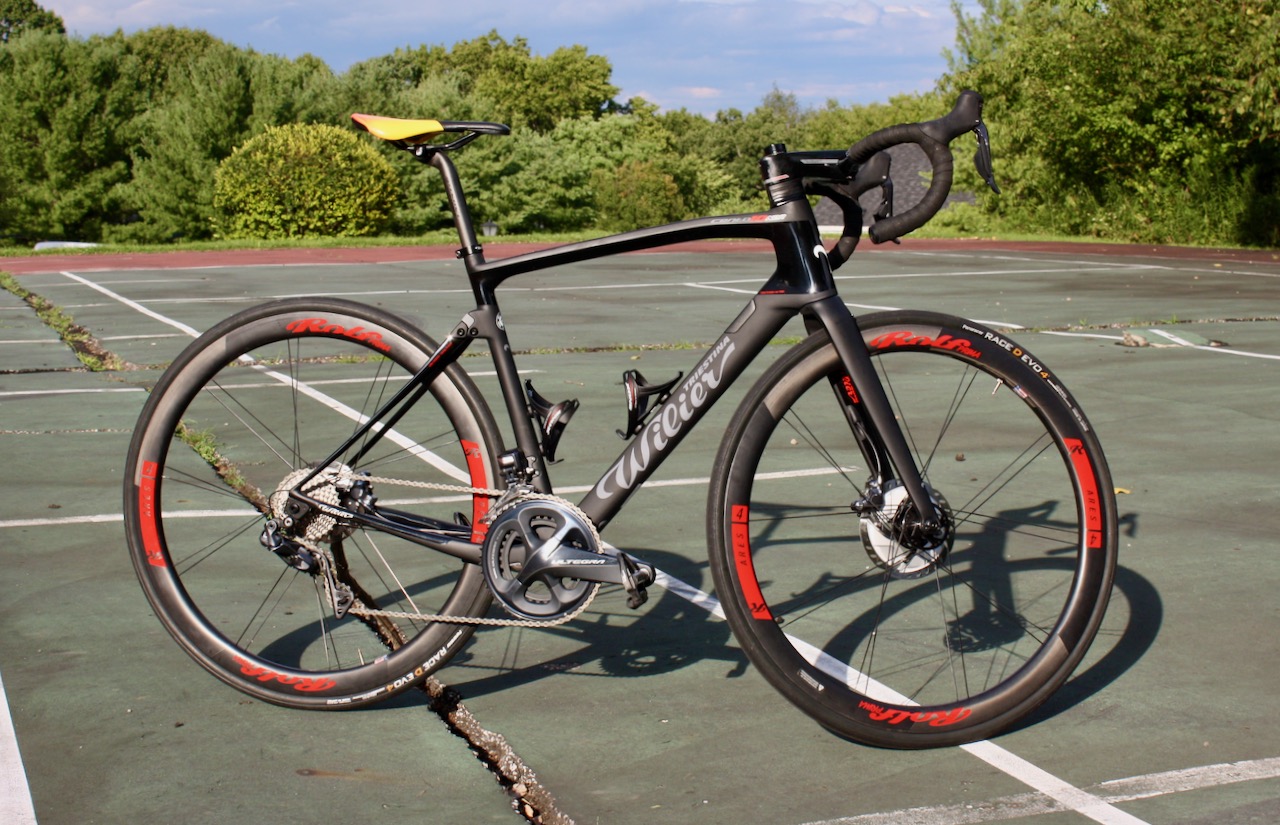Wilier’s Triestina Cento10NDR is an endurance bike that incorporates ideas on comfort, both new and old. The Cento 10NDR sits at the endurance end of Wilier’s race bikes – this is the bike that Total Direct Énergie and Astana keep in their arsenal for the cobbled classics.
The feature piece that sets the Cento10NDR apart from the Cento10PRO is the elastomer rear suspension. The Cento10PRO and NDR are focused on race performance, but the Cento10NDR is the arrow in your quiver that keeps your backside comfortable and churns out watts all day long, no matter on gravel or cobble.
Actiflex: The heart of the Cento10NDR
Wilier’s Cento10NDR is the Italian companies take on a performance racing frame that can deliver comfort and speed. This “all-day ride” comfort comes thanks to its ‘Actiflex’-equipped rear seat stays – Wilier’s approach to absorbing rear vibrations generated by bumps in the road surface. This is not a new idea, but every company that tackles it has a different take.
Trek has the ISO speed, Moots has/had the YBB, Pinarello has the Dogma FS, and that’s not even scratching the surface. The commonality is a fixed a horizontal plate that compresses vertically, creating movement when needed. This keeps the distance between the saddle and bottom bracket the same.
Wilier’s design uses an aluminum link and “technopolymer dissipater” (elastomer) that gives the rear wheel a few millimeters of travel depending on the rider’s weight and elastomer setup choice. The torsional stiffness of the aluminum link is comparable to traditional seat stays. The linkage stiffness and responsiveness achieves the racing performance Wilier aims for but, at the same time, allows the rear wheel to travel over bumps similar to a full-suspension mountain bike.
The unit consists of the lower aluminum link, four eyelet bushings, a special technopolymer elastomer, and linkage bolts. This elastomer is in full control of the kinematic movement of the rear triangle. From what Wilier claims, this special technopolymer has remarkable mechanical properties.
From what I can feel it is similar to the elastomer seen on the BMC Team Elite hardtail cross country bike. The material boasts high atmospheric resistance and can function in temperatures from -40°C to +150°C. That’s pretty extreme, and it’s hard to validate such a claim – though we felt zero change in comfort and response, whether in cold spring mornings or the scorching summer heat.
The elastomer is available in three different colors for the different levels of density – so the Actiflex suspension can be set up entirely according to the rider’s weight or terrain that they plan to encounter. The elastomer switches out quickly enough with a 25T fitting tool and some mechanical know how, but I wouldn’t change it in the parking lot before a group ride the first time out.
For the review period, I stayed with the medium grey elastomer for most of the riding. This specific density offered the right amount of road feel and small bump reduction. I’m a rider that also likes a tad more pressure in the rear shock of my mountain bikes, so you’ll need to find your fit by dialing in the right elastomer.
The travel in the rear from the Actiflex is active, not bouncy, and doesn’t feel like a flat rear tire like some suspension seat posts. Instead, I kept with the same tire pressure that I usually run on our chip and seal roads (around 75 psi for tubeless 28s), and the ride was comfortable and tuned—akin to when you find the right tire and pressure combo—but much faster and less tinkering. The Cento10NDR frame fits the 28mm tires with room to spare, and the max I was able to squeeze in was a 32mm IRC Serac CX Sand tire.
Wilier Triestina Cento10 NDR geometry
Sizes (* tested): XS, S, M*, L, XL, XXL
- Seat angle: 73.5 degrees
- Head angle: 72 degrees
- Chainstay: 40.8cm
- Seat tube: 51cm
- Top tube: 54.5cm
- Headtube: 15.7cm
- Wheelbase: 991mm
- Stack: 566cm
- Reach: 379cm
- Weight 17.6 lbs with stock wheels
The Ride
The Wilier Cento10NDR is not your classic endurance bike in terms of a higher, more casual front end. Since the primary audience for this ride is the competitive rider, Wilier crafted a lower than the norm front end for quick turning and sharpshooting. The feeling can be a bit off on the first couple rides – having such a stiff, responsive front end and a suspension rear, but the more I rode the Cento, the more the bike balanced out.
Accelerations and sprinting come naturally to the Cento10NDR, and there are no sluggish feelings when leaving the saddle. The frame has a classic aero shape that is clearly taken from the Wilier Cento10AIR. Wilier designed the Cento10NDR with its “Balanced Design” concept. This is something that most manufacturers are doing and means the ride feels the same on all Cento10NDR frame sizes.
The tube sections in the various sizes are different, to make sure that stiffness, comfort, and ride quality are the same on each frame size produced. All this is felt on the ride, but it’s hard to discern what specific piece is affecting it. What stands out is that Wilier has created a fantastic bike that all aspects work well together and give a memorable ride experience.
Wilier’s Barra and Stemma combination are very slick and give the front end of the Cento a professional ride and look – very pro. The integrated stem and head tube help conceal cable routing internally for a modern, clean-looking cockpit. The sophisticated design of the steerer tube combined with the unique form of the headtube allows Wilier to thread up to three cables inside the frame.
The three cables enter the steerer tube through the “Alabarda” or Stemma & Barra, routing the gear and brake cables from the levers at exactly the right angle in the steer tube.
So, if you’re using electronic gears and disc brakes (like ours), the bike will not have any exposed cables, giving the Cento10NDR a beautifully clean look.
Though the cockpit looks clean, the adjustments are not as easy. I found myself working hard to find the correct setup and was unable to switch stem lengths without a hassle. The proprietary spacers are a nice touch but are split in the middle to help adjust stack height.
This makes them unusable for a compression spacer on the top. I found a way around this by using standard 1-1/8 spacers to compress the stem and bearing stack. For those looking to achieve the uber pro set up – you’ll have to cut the steerer tube to length. This is a common occurrence with integrated stem/bar setups, the look is flawless once you get the setup dialed, but it may take a bit to get there.
Our Wilier Cento1-NDR arrived with Fulcrum Racing 5DB wheels with Vittoria Rubino 28mm tires. The wheels feature a 26mm-deep, slightly aero rim, and are tubeless-ready. The internal width of 17mm is narrower than most modern rims but matted with the Vittoria Rubino 28mm tires – they roll smooth. The Fulcrums have a bombproof build and the weight reflects that at 1,610g for the pair. Don’t let the weight fool you though, these wheels can climb and take a beating, and after many trips to the wash – the hubs are as smooth as the day I got them.
My only gripe is the narrow inner rim width – the 28mm tires fit nicely but anything above, even a 30mm looks off. I used our review Rolf Ares 4 after a long run on the Fulcrums. The drop in weight is a notable difference as well as confidence in cornering. The wider rim on the Rolfs helped with the overall ride quality of the 30mm tires.
The Shimano Ultegra Di2 50/34 compact setup and climb anything 11-32 cassette work in concert with the Wilier’s adventurous prowess. The shifting is precise and everything that one would expect from a top tier electronic groupset.
Wilier Triestina Cento10 NDR final thoughts
The Cento10NDR provides a ride that many riders are searching for; stable, comfortable, fast with an Italian flare. The positives vastly outweigh the small inconveniences of an off the beaten path design.
The suspension design has held its own in other facets of the industry, and I can see this going the long distance without many or any real issues. My only concern is the amount of maintenance the elastomer would need after a genuinely terrible east coast winter. On the other hand, we did put it through countless hours of gravel and limestone with zero issues. Plus, the system is straightforward to clean and service with the right tools and time. I wish the frame displayed the eye-catching Italian style that Wilier is known for, but the utility of the matte black hides rock nicks well and is not without purpose.
So if you’re looking to have your own personal Paris Roubaix or looking to tackle that century this season – the Wilier Cento10 NDR is a perfect bike to get you there.
Price: $7500
